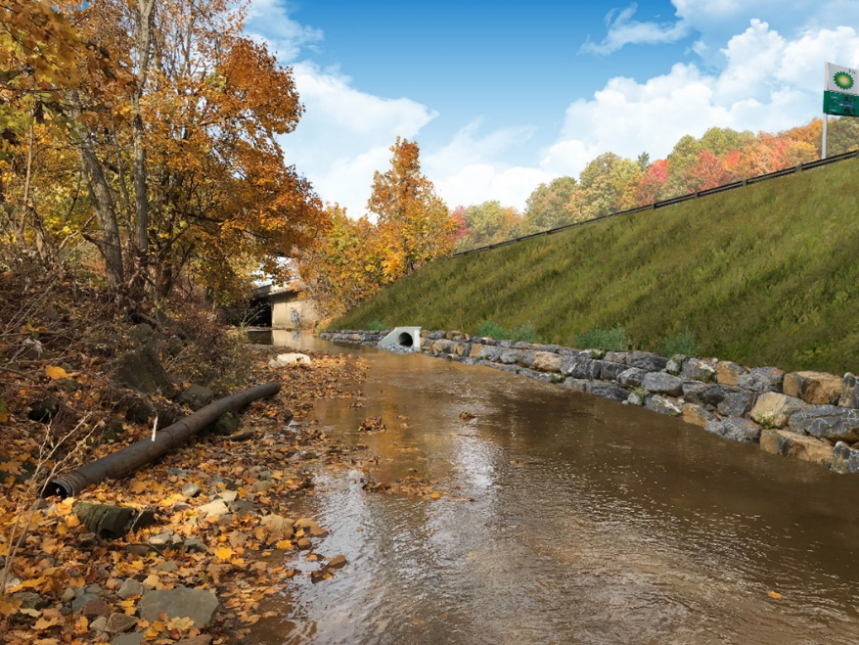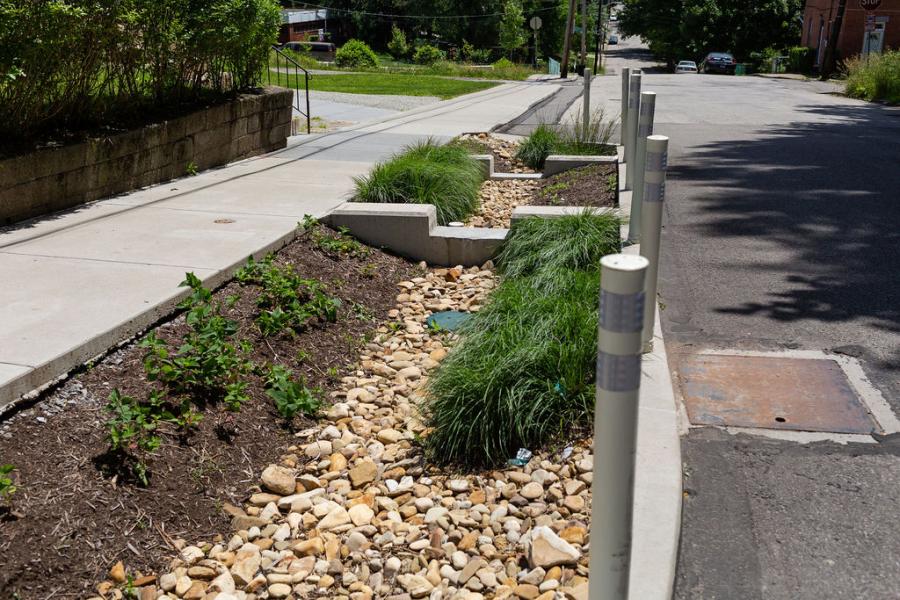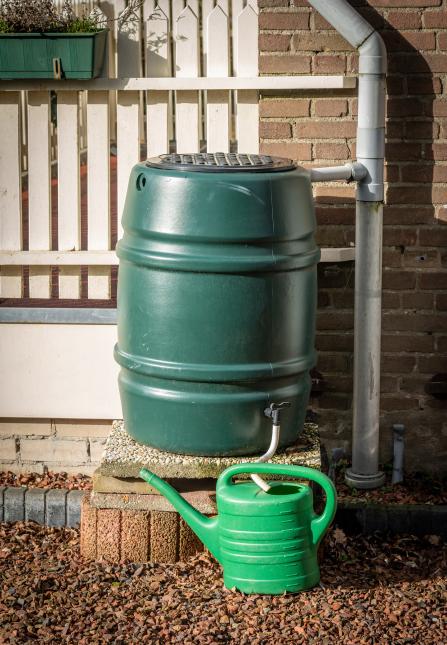We are building new stormwater solutions to reduce flooding, decrease water pollution, and change Pittsburgh's infrastructure for the better.
Pittsburgh’s first sewer lines were constructed in the 1840s in what is now present-day Shadyside and Oakland. These lines sent water directly to the Monongahela River. By 1908, nearly 400 miles of underground sewer lines were in place, establishing the start of our 1,200-mile combined sewer system.
Today, Pittsburgh looks a lot different.
There are more buildings, more roads, less green space, and greater demand placed on our infrastructure. While many things have changed, the way we treat wastewater and stormwater largely remains the same.
What does all this mean?

Approximately 75% of Pittsburgh sewer system is a Combined Sewer System meaning that wastewater (sewage) and stormwater (rainfall) flow through the same pipe. The remaining 25% is a Municipal Separate Storm Sewer System (MS4) where wastewater flows through one pipe and stormwater flows through the other. Both systems have one job to do - move water away from homes, buildings, parks, and roads so it is safely conveyed to either ALCOSAN, the regional wastewater treatment plant, or in the case of the MS4 system - sending stormwater to an outfall located along a river or stream.
But there are instances when the sewer system doesn't operate as it should. Rain, age of the pipes, and human activity can impact the performance of Pittsburgh's sewer system, lead to basement backups and illicit discharges, or cause pollution to enter our waterways and harm wildlife.
- Visit the Combined Sewer System page to learn about the history of our sewer system, how it functions, and the challenges it experiences when it rains too hard.
- Visit the Municipal Separate Storm Sewer System (MS4) page to learn about this portion of the sewer system, learn what PWSA is doing to reduce stormwater pollution, and the simple actions you can take every day to help.
How are we addressing this problem?

We are building a new wave of stormwater infrastructure that captures the rain where it falls, soaks into the ground, and is slowly released back into the sewer system.
They use a combination of green and gray infrastructure that on the surface mimic nature using vegetation, engineered soils, and open channels that retain water. Underneath are storage systems that hold water back before slowly releasing it through our network of sewer pipes.
The new projects are cost-effective and help to reduce basement backups, sewer overflows, and improve water quality. As we build up our network of stormwater infrastructure throughout Pittsburgh, they will become more effective at addressing some of our most crucial stormwater challenges.
Resources

Everyone in Pittsburgh needs to become part of the stormwater solution. You can make a difference by taking small actions every day to manage stormwater on your property, improve the quality of our rivers and streams, and protect those you care about during the large storms that frequently occur in Pittsburgh. Explore our stormwater pages for helpful resources and tips.
- Help Manage Stormwater: Learn how you can become part of the stormwater solutions that are needed in Pittsburgh.
- Find Your Sewershed: Use this searchable map to find which sewershed you live in and its contribution to combined sewer overflows (CSOs) to our rivers.
- Flood Preparedness: Learn how to protect your family, property, and belongings from flooding.
- Reduce Pollution: Discover how everyday actions can improve the health of our waterways and discover resources for the proper disposal of household items and chemicals that contribute to pollution.
